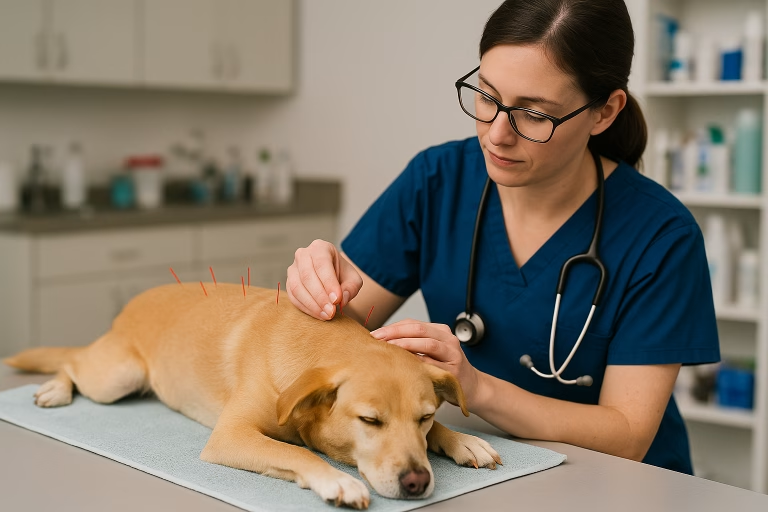
A bundled-up woman clears her nose on a chilly autumn day, representing the need for effective oral decongestants during cold and allergy season.
I. Introduction
Nasal and sinus congestion can tank sleep, productivity, and overall quality of life. For fast, systemic relief, many adults reach for oral decongestants—historically either pseudoephedrine (PSE) or phenylephrine (PE). Over the last two years, however, the evidence and guidance have shifted: after reviewing clinical data, the FDA’s advisory committee concluded in 2023 that orally administered phenylephrine is not effective for nasal congestion, and in November 2024 the FDA proposed removing oral phenylephrine from the OTC monograph (nasal-spray PE is not part of this proposal). Practically, this means shoppers should prioritize alternative options—most notably pseudoephedrine—while regulators finalize next steps. U.S. Food and Drug Administration+1
By contrast, pseudoephedrine has long-standing evidence of modest but real symptom improvement for adults—along with small average increases in systolic blood pressure (≈ +1 mm Hg) and heart rate (≈ +3 bpm) that matter for certain patients (we’ll outline who should avoid or use with caution). Used short-term at labeled doses, pseudoephedrine’s risk–benefit profile is acceptable for most healthy adults. JAMA NetworkPubMedNCBI
Because pseudoephedrine can be diverted to illicit methamphetamine production, U.S. law places it behind the counter with purchase limits (3.6 g/day and 9 g/30 days), ID checks, and logbook requirements. You can still buy it without a prescription—just ask the pharmacist. We’ll explain exactly how to spot the right box in-store and what those limits mean. U.S. Food and Drug Administrationdeadiversion.usdoj.govFederal Register
Safety snapshot (who should read carefully)
- Pregnancy: ACOG advises not using pseudoephedrine in the first trimester; consider non-drug measures or pregnancy-safer options in later trimesters after clinician input. ACOG
- Breastfeeding: Even a single 60-mg pseudoephedrine dose can reduce milk supply; alternatives are preferred if maintaining supply is a priority. NCBIPMC
- Young children: The FDA does not recommend cough/cold products with decongestants for children <2 years; manufacturers label most as “do not use under 4 years.” U.S. Food and Drug Administration+1
- Chronic conditions/meds: People with uncontrolled hypertension, coronary disease, arrhythmias, BPH, glaucoma, hyperthyroidism, diabetes, or those on MAOIs should avoid or seek medical advice before using oral decongestants. We’ll detail risks and label language later. DailyMed+1
What this guide covers
- How oral decongestants work and when to use them
- Pharmacist-recommended single-ingredient picks (why single-ingredient matters)
- Dosing, duration, and practical tips to minimize side effects
- Who should avoid them and evidence-based alternatives (e.g., intranasal corticosteroids for allergy-driven congestion) AAO-HNSAAO-HNSF Journals
II. How Oral Decongestants Work
The science of congestion
When you have a cold, flu, sinus infection, or allergy flare, the blood vessels in your nasal passages dilate and leak fluid into the surrounding tissues. This swelling narrows your airway, leading to the stuffy, “can’t breathe through my nose” feeling.
Oral decongestants—primarily pseudoephedrine (PSE) and phenylephrine (PE)—belong to a class of drugs called sympathomimetics. They act by stimulating α-adrenergic receptors on the smooth muscle in nasal blood vessels. This stimulation causes vasoconstriction, which reduces blood flow, shrinks swollen mucosa, and opens the airway.
- Pseudoephedrine: Well absorbed in the GI tract, with bioavailability ~90%. Onset of action typically 30–60 minutes, peak around 1–2 hours, and effects lasting 4–6 hours (IR) or up to 12–24 hours (ER) depending on the formulation.
- Phenylephrine: Poor oral bioavailability (~40% or less) due to first-pass metabolism by monoamine oxidase in the gut and liver. This is why, even at labeled doses, PE often fails to deliver meaningful decongestant activity in the nose.
Immediate-release (IR) vs. extended-release (ER)
- IR pseudoephedrine (30–60 mg): Works quickly but requires dosing every 4–6 hours. May be better for daytime use if you want relief only during waking hours.
- ER pseudoephedrine (120 mg, 12-hour): Offers convenience with twice-daily dosing; preferred by many for sustained relief.
- 24-hour formulations (240 mg): Allow once-daily dosing but often cause insomnia if taken late, and may increase risk of side effects in sensitive patients.
Systemic effects: beyond the nose
Because oral decongestants act throughout the body (not just locally), they can cause:
- Elevated blood pressure (especially in hypertensive patients)
- Increased heart rate
- CNS stimulation → insomnia, jitteriness, anxiety
- Urinary retention in men with BPH
- Rarely: arrhythmias or more serious cardiovascular complications
A 2005 meta-analysis in JAMA found that pseudoephedrine modestly but significantly increases systolic blood pressure and heart rate—clinically small for most healthy adults but potentially important in those with cardiovascular risk.
Key takeaway
- Oral decongestants relieve stuffy noses by shrinking swollen blood vessels in the nasal passages.
- Pseudoephedrine works reliably and lasts several hours.
- Phenylephrine, when taken orally, is extensively metabolized and often fails to deliver relief.
- Because these agents act systemically, they bring both benefits and risks that vary by patient.
III. Phenylephrine vs. Pseudoephedrine: What the Evidence Really Says
Phenylephrine (PE): Why It Fails Orally
- Bioavailability issue: When taken by mouth, phenylephrine is heavily metabolized by gut and liver monoamine oxidase (MAO), leaving little active drug to circulate. That means very little reaches the nasal blood vessels.
- Clinical data: Multiple controlled trials and meta-analyses show no meaningful improvement in nasal airflow or symptom scores compared with placebo. A 2023 FDA advisory committee reviewed the evidence and voted unanimously that oral PE is ineffective at standard doses (10 mg every 4 hours).
- Regulatory update: In November 2024, the FDA proposed removing oral phenylephrine from the OTC monograph, meaning it may eventually be pulled from shelves or relabeled for other uses. (Important: PE nasal sprays and eye drops are not affected, since they bypass first-pass metabolism.)
Practical implication: If the box says “PE” or “phenylephrine”, most pharmacists advise skipping it—it likely won’t help congestion.
Pseudoephedrine (PSE): The Reliable Choice
- Pharmacology: Pseudoephedrine is well absorbed (≈90% oral bioavailability). It reliably stimulates α-adrenergic receptors in the nasal mucosa, producing real (though modest) reductions in swelling and improved airflow.
- Clinical data:
- A 2005 JAMA meta-analysis found pseudoephedrine significantly improved nasal patency and symptom scores compared to placebo, while raising systolic blood pressure by ~1 mm Hg and heart rate by ~3 bpm. For most healthy adults, this risk is minimal.
- A Cochrane Review confirmed pseudoephedrine offers short-term relief in adults with viral or allergic rhinitis, especially in IR and ER forms.
- Duration: Relief lasts 4–6 hours with IR tablets, and up to 12 hours (120 mg ER) or 24 hours (240 mg ER).
Side-by-Side Comparison
| Feature | Phenylephrine (PE) | Pseudoephedrine (PSE) |
|---|---|---|
| Efficacy (oral) | Ineffective (FDA 2023 conclusion) | Proven modest relief |
| Onset of action | Inconsistent | 30–60 min |
| Duration | ~4 hrs, weak effect | 4–6 hrs (IR), 12–24 hrs (ER) |
| Safety profile | Generally safe, but ineffective | Effective; mild ↑ BP/HR, insomnia risk |
| Availability | On shelves, no ID needed | Behind-the-counter; ID + purchase limits |
| Best use case | None (nasal sprays only) | Short-term congestion relief in healthy adults |
Why You Still See PE on Shelves
Because pseudoephedrine is restricted under the Combat Methamphetamine Epidemic Act (CMEA), many manufacturers shifted to phenylephrine to sell decongestants directly on shelves without ID checks. This led to widespread consumer confusion—most people don’t realize the switch meant less effective relief. The FDA’s new proposal may finally change this.
Key Takeaway
- Pseudoephedrine remains the only effective oral decongestant available OTC.
- Phenylephrine, when swallowed, simply doesn’t work—even though it’s still on shelves for now.
- Always check labels carefully: if it says “PE,” you’re better off asking the pharmacist for pseudoephedrine.
IV. Who Should (and Shouldn’t) Use Oral Decongestants
Oral decongestants can provide real relief—but they aren’t safe or appropriate for everyone. As a pharmacist, I always stress patient-specific factors before recommending pseudoephedrine. Here’s who benefits most, and who should steer clear.
✅ Who May Benefit from Oral Decongestants
- Healthy adults with short-term congestion from colds, flu, or mild sinus infections.
- Allergy sufferers with significant nasal blockage (pseudoephedrine is sometimes combined with antihistamines in allergy formulations).
- Travelers experiencing ear/sinus pressure during flights (short-term pseudoephedrine can help equalize pressure).
- Those preferring pill form instead of sprays, either for convenience or dislike of nasal products.
⚠️ Groups That Require Extra Caution
- Pregnancy
- The American College of Obstetricians and Gynecologists (ACOG) advises avoiding pseudoephedrine in the first trimester due to a small but notable association with abdominal wall birth defects. Later in pregnancy, non-drug options (saline, humidification) or certain intranasal steroids (e.g., budesonide, category B) are generally safer.
- Always discuss congestion management with an OB-GYN before using any oral decongestant.
- Breastfeeding
- A single 60 mg pseudoephedrine dose has been shown to reduce milk supply. Babies may also show irritability. Alternatives such as saline or topical sprays may be better choices for nursing mothers.
- Children
- The FDA does not recommend oral decongestants (or combo cough/cold products) for children under 2 years.
- Manufacturers label most pseudoephedrine products as “do not use under 4 years”.
- For children ≥6 years, dosing is weight-based and should only be done under pediatric guidance.
- Older adults (65+)
- More sensitive to cardiovascular and urinary side effects.
- Increased risk of urinary retention in men with benign prostatic hyperplasia (BPH).
- Greater risk of insomnia and agitation.
🚫 Who Should Avoid Oral Decongestants Entirely
- Uncontrolled hypertension: Pseudoephedrine can raise BP and HR, increasing risk of stroke or cardiac events.
- Coronary artery disease or arrhythmias: Stimulant effects may worsen angina, palpitations, or arrhythmias.
- Severe BPH: May worsen urinary retention.
- Narrow-angle glaucoma: Vasoconstriction may increase intraocular pressure.
- Hyperthyroidism: Already increases sensitivity to catecholamines; pseudoephedrine can exacerbate symptoms.
- Diabetes (poorly controlled): May affect glucose regulation and cardiovascular strain.
- MAOI users (e.g., phenelzine, tranylcypromine, linezolid): Contraindicated due to risk of severe hypertensive crisis.
FDA and DailyMed product labeling consistently warn against use in these populations.
⚖️ Athlete Considerations
- Pseudoephedrine is permitted in sport but listed on the World Anti-Doping Agency (WADA) monitoring program. High doses taken close to competition (≥150 µg/mL urine) may trigger a positive test. Athletes should consult team physicians before use.
Key Takeaway
- Most healthy adults can safely use pseudoephedrine short-term.
- Pregnant women (first trimester), breastfeeding mothers, young children, and patients with certain chronic conditions should avoid or seek alternatives.
- When in doubt, a quick conversation with your pharmacist or physician can prevent complications.
V. Pharmacist-Recommended Single-Ingredient Products (What to actually buy)
Short version: choose single-ingredient pseudoephedrine (PSE) behind the counter. Start with ER 120 mg (12-hour) or IR 60 mg, and avoid oral phenylephrine. Evidence shows PSE gives modest, real relief; the main trade-offs are mild BP/HR bumps and possible insomnia. JAMA Network
A. Best overall for most adults: Pseudoephedrine ER 120 mg (12-hour)
Why pharmacists like it
- Reliable symptom relief with a convenient twice-daily schedule.
- Smoother blood-level curve than IR, which many people find less “jittery.”
- Easy to time morning/evening (take the second dose no later than mid-afternoon to protect sleep).
How to use (label examples) - Typical adult directions: 1 tablet every 12 hours; max 2 tablets/24 h (total 240 mg/day). See sample labels on DailyMed. DailyMed+1
Good for: daytime + early-evening congestion, travel days, work shifts.
Skip/Use with caution: uncontrolled hypertension, serious heart disease, arrhythmias, BPH, narrow-angle glaucoma, hyperthyroidism, diabetes, or MAOI use (full warnings on labels). DailyMed
B. Best for targeted daytime use or lighter symptoms: Pseudoephedrine IR 60 mg
Why/when to pick IR
- Faster flexibility: dose only when you need it.
- Useful if your symptoms wax and wane or you want to avoid evening dosing.
How to use (label examples) - Common adult directions: 60 mg every 4–6 h; max 240 mg/day. (Follow your specific package.) DailyMed
Evidence notes - Meta-analysis of 24 trials: PSE produced modest but significant improvements in congestion with ~+1 mm Hg systolic BP and ~+3 bpm HR on average. JAMA NetworkPubMedNCBI
DailyMed examples: generic 60 mg tablets; check warnings/directions. DailyMed
C. Once-daily option for select users: Pseudoephedrine ER 240 mg (24-hour)
Why it’s niche
- Max convenience (one morning dose).
- But the long tail can mean more insomnia or “wired” feeling for some. If sleep is precious, prefer 12-hour.
How to use (label example) - 1 tablet every 24 h; do not exceed 1/24 h. See DailyMed. DailyMed
Who might consider it - Travelers or shift workers who need all-day relief and tolerate stimulants well.
D. Why single-ingredient matters (and how to spot it)
- Multi-symptom “cold & flu” boxes often add actives you don’t need (e.g., cough suppressants, acetaminophen), which raises side-effects + interaction risk without better decongestion. Start with PSE alone, then add a separate analgesic/antihistamine only if needed.
- Label literacy: look for “Active ingredient: pseudoephedrine HCl (or sulfate)” and no other actives. For reference labeling and exact directions/warnings, use DailyMed (the FDA-linked drug-label database). DailyMed+1
E. Where to find real pseudoephedrine (and why it’s not on the shelf)
- Thanks to the Combat Methamphetamine Epidemic Act (CMEA), PSE is sold behind the counter with ID + logbook requirements.
- Federal limits: ≤3.6 g/day and ≤9 g/30 days per person. (Some states are stricter.) Ask the pharmacist; they’ll retrieve the product for you. U.S. Food and Drug AdministrationDEA Diversion Control DivisionFederal Register
F. Choosing IR vs ER: quick decision guide
- Need predictable all-day control? → ER 120 mg morning + mid-afternoon. DailyMed
- Only stuffy at certain times or want to avoid evenings? → IR 60 mg during the day. DailyMed
- Okay with stimulants and crave once-daily simplicity? → ER 240 mg (morning only). DailyMed
G. Safety reminders (read before you dose)
- Max daily exposure (most adult labels): 240 mg/day from all sources combined. Check your specific product. DailyMed+1
- Time last dose by ~3–4 pm to reduce insomnia (especially with ER).
- Stop and seek care if congestion >7 days, you develop fever/worsening facial pain, or you feel palpitations, chest pain, severe headache, or urinary retention (men with BPH). Label warnings apply. DailyMed
Handy label links (examples; generics equivalent)
- ER 12-hour (120 mg): DailyMed sample label. DailyMed
- ER 24-hour (240 mg): DailyMed sample label. DailyMed
- IR 60 mg: DailyMed sample label. DailyMed
- IR 30 mg: DailyMed sample label. DailyMed
VI. Combination Products — When They Make Sense (and When They Don’t)
Pharmacists almost always recommend starting with single-ingredient pseudoephedrine. But sometimes, combination products have a role — provided you choose carefully. Multi-symptom cold/flu boxes often add unnecessary drugs, leading to avoidable side effects. Here’s how to decide when combos are useful, and when they’re best avoided.
A. Pseudoephedrine + Analgesics (Pain + Pressure Relief)
- Examples: Products combining pseudoephedrine 120 mg + naproxen sodium 220 mg (e.g., Aleve-D Sinus & Cold).
- When useful: For patients with nasal congestion + sinus pain/pressure or headache. Naproxen provides sustained pain relief, while pseudoephedrine relieves swelling.
- Evidence: NSAIDs like naproxen are well established for reducing sinus pain and inflammation. Combining with pseudoephedrine can improve overall symptom relief in acute sinusitis.
- Cautions: NSAID risks (GI upset, ulcers, kidney effects, blood pressure elevation). Avoid in patients with peptic ulcer disease, kidney disease, or uncontrolled hypertension.
B. Pseudoephedrine + Antihistamines (Allergy-Driven Congestion)
- Examples: Loratadine-D, Cetirizine-D, Fexofenadine-D (each pairs a non-sedating antihistamine with pseudoephedrine).
- When useful: For allergic rhinitis with both congestion + runny nose/itchy eyes/sneezing. Antihistamines address the histamine-driven drip and itch; pseudoephedrine opens the airway.
- Evidence: Studies show improved patient-reported outcomes when antihistamines and decongestants are combined for seasonal allergic rhinitis. (See Journal of Allergy and Clinical Immunology).
- Cautions: Antihistamines can cause sedation (especially older ones like diphenhydramine). Second-generation “non-drowsy” antihistamines (loratadine, fexofenadine, cetirizine) are preferred.
C. Multi-Symptom Cold/Flu Combos (Often Overkill)
- Examples: “Severe Cold & Flu” products that combine pseudoephedrine or phenylephrine with acetaminophen, dextromethorphan, guaifenesin, antihistamines, and more.
- Problems:
- Increases side effect risk (e.g., drowsiness, liver stress from acetaminophen).
- Raises drug interaction risks (duplicate ingredients across products).
- Makes it harder to adjust dosing — you can’t take “just the decongestant” or “just the pain reliever.”
- Guideline advice: Most pharmacists and the American Family Physician recommend single-ingredient therapy first, then adding only what’s truly necessary.
D. Label Literacy Tips for Combination Products
- Check the active ingredient list — confirm it contains pseudoephedrine, not phenylephrine.
- Count the actives — the more added drugs, the more chance for side effects.
- Watch for acetaminophen (APAP) — very common in cold/flu combos; unintentional overdoses are a real risk if you also take separate Tylenol.
- Look at the dosing frequency — antihistamine + pseudoephedrine combos are often 12-hour, aligning well with twice-daily schedules.
Key Takeaway
- Pseudoephedrine + naproxen → Good option for sinus pain + congestion.
- Pseudoephedrine + antihistamines → Great for allergy season.
- Multi-symptom “shotgun” mixes → Usually not worth it; can expose you to extra drugs you don’t need.
- Always read the label carefully (DailyMed is your friend for checking active ingredients).
VII. Dosing, Duration & Safe Use
Oral decongestants can be very effective, but only when used correctly. Below is a pharmacist’s guide to proper dosing, how long to use them, and practical tips for minimizing side effects.
A. Typical Adult Dosing (Pseudoephedrine)
- Immediate-Release (IR) tablets:
- 30–60 mg every 4–6 hours as needed
- Maximum: 240 mg/day
- Extended-Release (ER) 12-hour tablets (120 mg):
- 1 tablet every 12 hours
- Maximum: 240 mg/day
- Extended-Release (ER) 24-hour tablets (240 mg):
- 1 tablet every 24 hours
- Maximum: 240 mg/day
- Important: Always check the product’s own label. Some generics differ slightly in release profile. For examples, see DailyMed.
B. Duration of Use
- Most labels recommend no longer than 7 days unless directed by a physician.
- If symptoms persist beyond a week, or worsen, it may signal sinus infection, allergy flare, or another condition requiring different treatment.
C. Timing Tips to Avoid Insomnia
- Take the last dose no later than mid-afternoon (around 3–4 pm), especially with ER forms.
- If using IR tablets, plan doses around meals or active hours to reduce nighttime stimulation.
- Sensitive patients may benefit from morning-only dosing if congestion is tolerable later in the day.
D. Pediatric Use (With Caution)
- Not recommended under age 4 by most manufacturers.
- For children 6–12 years, weight-based dosing exists (commonly 30 mg every 4–6 hours; max 120 mg/day), but always under pediatric guidance.
- The FDA and AAP advise avoiding oral decongestants in very young children due to risk of overdose and lack of proven benefit.
E. Practical Safety Tips
- Check total daily dose — don’t exceed 240 mg pseudoephedrine across all products.
- Avoid double-dosing — watch out for hidden pseudoephedrine in combo cold/flu products.
- Stay hydrated — decongestants can cause mild dryness.
- Don’t mix with alcohol or caffeine if you’re sensitive to stimulants.
- Stop immediately if you develop chest pain, palpitations, severe headache, or urinary retention.
Key Takeaway
- IR, 12-hour ER, and 24-hour ER are all effective when dosed properly.
- Respect the maximum 240 mg/day limit.
- Limit use to ≤7 days, and stop earlier if symptoms resolve.
- Use timing strategies to minimize insomnia and side effects.
VIII. Side Effects, Interactions & Risk Management
Even when used properly, oral decongestants carry some risks. Understanding both common annoyances and serious concerns can help you decide whether pseudoephedrine is right for you.
A. Common Side Effects (Usually Mild, Dose-Related)
- Insomnia – especially if taken late in the day.
- Jitteriness, restlessness, or anxiety – stimulant-like effects.
- Headache – from vascular changes.
- Dry mouth, dry nose, or thirst – due to decreased secretions.
- Mild increase in blood pressure or heart rate – most noticeable in sensitive individuals.
A 2005 JAMA meta-analysis reported average increases of ~+1 mm Hg systolic blood pressure and +3 bpm heart rate in healthy adults. For most, this is modest, but it can matter for those with cardiovascular disease.
B. Serious Side Effects (Seek Medical Attention Immediately)
- Significant rise in blood pressure → severe headache, chest pain, or vision changes.
- Heart rhythm disturbances → palpitations, irregular heartbeat, chest tightness.
- Stroke-like symptoms → weakness, slurred speech, facial droop.
- Urinary retention → especially in men with benign prostatic hyperplasia (BPH).
- Severe allergic reactions → rare but possible (rash, swelling, difficulty breathing).
C. Drug Interactions (Pharmacist Red-Flags)
- Monoamine Oxidase Inhibitors (MAOIs)
- Contraindicated: risk of hypertensive crisis.
- Avoid pseudoephedrine if taking or recently stopped an MAOI (within 14 days).
- Other stimulants (caffeine, ADHD medications like amphetamines, bupropion)
- Increased risk of nervousness, palpitations, or insomnia.
- Other decongestants (e.g., topical sprays, combination products)
- Raises risk of excessive vasoconstriction and blood pressure spikes.
- Antihypertensives (e.g., beta-blockers, calcium-channel blockers)
- Pseudoephedrine may reduce their effectiveness; blood pressure should be monitored.
D. Disease State Precautions
- Hypertension: even small BP increases can be risky if not well controlled.
- Coronary artery disease / arrhythmias: stimulant effect can worsen ischemia or trigger irregular beats.
- BPH: urinary retention is a common complaint.
- Narrow-angle glaucoma: pseudoephedrine may increase intraocular pressure.
- Hyperthyroidism: heightened sensitivity to adrenergic effects.
- Diabetes: can worsen blood glucose control in some patients.
These conditions are consistently listed in product labeling on DailyMed.
E. Risk Management Strategies
- Take lowest effective dose for the shortest duration possible.
- Monitor blood pressure and heart rate if you have a history of hypertension or heart disease.
- Avoid bedtime dosing to reduce insomnia.
- Don’t stack products (avoid combos that duplicate pseudoephedrine).
- Ask your pharmacist or physician before starting if you have chronic conditions or take multiple medications.
Key Takeaway
- Most people experience only mild side effects like restlessness or insomnia.
- Those with cardiovascular, prostate, thyroid, or eye conditions should avoid pseudoephedrine or seek medical clearance.
- Interactions with MAOIs, stimulants, and other decongestants are especially important to avoid.
- Safe use = lowest effective dose, shortest duration, pharmacist guidance.
IX. Regulatory Landscape: Why Pseudoephedrine Is Behind the Counter
A. The Combat Methamphetamine Epidemic Act (CMEA) of 2006
Pseudoephedrine (PSE) is not just a decongestant — it’s also a precursor chemical in the illicit production of methamphetamine. To curb diversion, the U.S. passed the Combat Methamphetamine Epidemic Act (CMEA) in 2006. This law didn’t ban pseudoephedrine but created strict purchase rules:
- Behind-the-counter sales only (not on open shelves)
- ID required for every purchase
- Signature logbook to track buyers
- Purchase limits:
- 3.6 grams/day (about thirty 120 mg tablets)
- 9 grams/30 days per person
Some states impose stricter limits, and a few even require a prescription. Check your local pharmacy laws before shopping.
B. Why Phenylephrine Still Dominates Store Shelves
Manufacturers reformulated many “cold & sinus” products with phenylephrine (PE) instead of pseudoephedrine to bypass CMEA restrictions. Phenylephrine can be stocked on open shelves, doesn’t require ID, and isn’t tracked. Unfortunately, it’s also ineffective when taken orally — leading to widespread consumer confusion.
In 2023, the FDA’s Nonprescription Drugs Advisory Committee voted unanimously that oral PE is ineffective at approved doses. By November 2024, the FDA formally proposed removing oral phenylephrine from the OTC monograph, which would force manufacturers to reformulate or withdraw products.
C. Global Regulations
- Canada & EU: Pseudoephedrine remains available OTC but subject to quantity limits.
- Australia: Classified as a “Pharmacist Only Medicine” — available OTC but only with pharmacist consultation.
- Japan: Pseudoephedrine is more tightly controlled; travelers are limited in what they can bring into the country.
D. Consumer Impact
- Extra step: You must go to the pharmacy counter, show ID, and sign a logbook.
- Confusion: Many consumers unknowingly buy phenylephrine-based products, not realizing they won’t help much.
- Higher trust in pharmacists: Pharmacists play a central role in guiding patients to the effective option (pseudoephedrine).
Key Takeaway
- Pseudoephedrine’s behind-the-counter status is due to methamphetamine control laws, not safety concerns.
- Phenylephrine dominates shelves because it’s unrestricted, not because it works.
- Recent FDA actions may finally remove oral phenylephrine from the market, pushing manufacturers back to evidence-based options.
X. Alternatives to Oral Decongestants
Not everyone can (or should) use pseudoephedrine. Fortunately, several alternatives exist — some with stronger evidence for certain conditions, and others that avoid systemic side effects altogether.
A. Intranasal Corticosteroid Sprays (First-Line for Allergies)
- Examples: Fluticasone (Flonase), Mometasone (Nasonex), Budesonide (Rhinocort).
- How they work: Reduce inflammation in the nasal passages, shrinking swollen tissue and decreasing mucus.
- Best for: Allergic rhinitis (seasonal or perennial). More effective than oral decongestants for long-term allergy control.
- Evidence: A 2016 Annals of Allergy, Asthma & Immunology review showed intranasal steroids are the most effective monotherapy for nasal symptoms in allergic rhinitis.
- Cautions: Take several days for full effect; may cause mild nosebleeds or throat irritation.
B. Short-Course Topical Nasal Decongestants
- Examples: Oxymetazoline (Afrin), Phenylephrine nasal spray.
- How they work: Directly constrict nasal blood vessels at the site.
- Pros: Very fast relief (within minutes).
- Cons: Risk of rebound congestion (rhinitis medicamentosa) if used >3 days in a row.
- Best for: Severe, short-term congestion, such as before flying or during acute sinus flare-ups.
C. Saline Irrigation & Nasal Sprays
- Examples: Neti pot, squeeze bottle (NeilMed), isotonic or hypertonic saline sprays.
- How they work: Mechanically flush out mucus, allergens, and irritants.
- Evidence: Multiple randomized trials confirm saline irrigation improves nasal symptom scores in chronic rhinosinusitis and allergic rhinitis patients.
- Safe for all ages (including pregnancy and children).
D. Oral & Intranasal Antihistamines
- Oral examples: Loratadine, Cetirizine, Fexofenadine.
- Nasal sprays: Azelastine, Olopatadine.
- Best for: Allergy-driven congestion, sneezing, runny nose, itchy eyes.
- Note: Alone, antihistamines are less effective for nasal congestion than pseudoephedrine or nasal steroids, but they complement therapy well.
E. Non-Drug Measures & Lifestyle Support
- Humidifiers: Add moisture to dry indoor air, easing breathing.
- Warm showers & steam inhalation: Help thin mucus.
- Hydration: Keeps mucus less sticky.
- Sleeping position: Elevating the head can reduce nighttime congestion.
- Avoid irritants: Tobacco smoke, dust, and strong odors worsen swelling.
Key Takeaway
- For allergy-related congestion, intranasal corticosteroids are often more effective than oral decongestants.
- For short-term severe blockage, topical sprays work rapidly — but should be limited to 3 days.
- Saline irrigation and lifestyle measures are safe and effective supportive tools.
- Combining approaches (e.g., saline + steroid spray) often works better than any one method.
XI. Buyer’s Guide & FAQs
Even if you know pseudoephedrine is the only effective oral decongestant, finding it in stores can still be confusing. Here’s a practical pharmacist’s guide to navigating labels, store shelves, and common patient concerns.
A. How to Spot Real Pseudoephedrine (vs. Ineffective Phenylephrine)
- Check the active ingredient line: Look for “pseudoephedrine HCl”. If it says “phenylephrine HCl”, put it back.
- Look for the “D”: Allergy medicines ending in “-D” (like Claritin-D or Zyrtec-D) contain pseudoephedrine + an antihistamine.
- Behind-the-counter: True pseudoephedrine products are usually kept at the pharmacy counter, not the open shelf.
- Box wording: Products that say “Sudafed PE” = phenylephrine (ineffective). “Sudafed” without “PE” usually = pseudoephedrine (effective).
B. Trusted Product Types (Examples)
- Single-ingredient pseudoephedrine:
- Sudafed 12 Hour (120 mg ER)
- Sudafed 24 Hour (240 mg ER)
- Generic pseudoephedrine IR (30–60 mg)
- Allergy combos (when both congestion + histamine symptoms are present):
- Claritin-D (loratadine + PSE)
- Zyrtec-D (cetirizine + PSE)
- Allegra-D (fexofenadine + PSE)
- Sinus pain/pressure combos:
- Aleve-D Sinus & Cold (naproxen + PSE)
(For details, see FDA-approved drug labels at DailyMed).
C. FAQs
1. Can I take this if I have high blood pressure?
- If your blood pressure is well-controlled and your doctor approves, short-term pseudoephedrine may be acceptable. If uncontrolled, it should be avoided.
2. Is pseudoephedrine safe in pregnancy?
- Avoid in the first trimester (possible birth defect risk). Later in pregnancy, ask your OB-GYN before using; intranasal steroid sprays are usually preferred.
3. Is it safe while breastfeeding?
- Pseudoephedrine may reduce milk supply. Alternatives like saline or intranasal sprays are recommended if maintaining supply is important.
4. Why do I need to show my ID?
- U.S. law (CMEA 2006) requires tracking sales to prevent methamphetamine production. Limits: 3.6 g/day, 9 g/30 days.
5. How fast does it work?
- Pseudoephedrine starts working in 30–60 minutes; peak effect at 1–2 hours.
6. How long can I take it?
- Usually no more than 7 days unless directed by a healthcare provider. Persistent congestion may need allergy treatment or medical evaluation.
7. Can kids use it?
- Generally not recommended under age 4; cautious use in children ≥6 years, but only under pediatric guidance.
8. What’s better for allergies: decongestant or antihistamine?
- For itching, sneezing, runny nose → antihistamines.
- For blocked nose → pseudoephedrine (or nasal steroid sprays for long-term relief).
9. What if pseudoephedrine keeps me awake?
- Try taking only morning doses, or switch to shorter-acting IR tablets instead of 24-hour ER forms.
10. What’s the best overall choice?
- For most adults: Pseudoephedrine ER 120 mg (12-hour) — convenient, effective, and generally well-tolerated.
Key Takeaway
- Always read the active ingredient and avoid oral phenylephrine.
- Stick to single-ingredient pseudoephedrine unless you specifically need an add-on (antihistamine or analgesic).
- When in doubt, ask your pharmacist to pull the right box from behind the counter.
XII. Conclusion
Nasal and sinus congestion is one of the most frustrating symptoms of colds, allergies, and sinus infections. While the drugstore aisle is packed with “decongestants,” the evidence is clear: pseudoephedrine is the only effective oral decongestant available in the U.S.
- Phenylephrine, still widely sold on shelves, has been shown in multiple studies — and confirmed by the FDA’s 2023 advisory panel — to be ineffective when taken orally. The FDA has even proposed removing it from the OTC monograph.
- Pseudoephedrine, though modest in its effect, consistently provides meaningful relief for adults when used properly. Its behind-the-counter status is due to anti-methamphetamine laws, not safety concerns.
- Safety matters: While most healthy adults tolerate pseudoephedrine well, it can increase blood pressure and heart rate. Special populations — including pregnant women, breastfeeding mothers, young children, and patients with heart disease, glaucoma, hyperthyroidism, or BPH — should avoid it or use alternatives.
- Alternatives like intranasal corticosteroids, saline irrigation, and short-term topical sprays often work better for long-term allergy-driven congestion or in those who can’t take oral decongestants.
Final Pharmacist’s Advice
- Always read the label — choose products with pseudoephedrine, not phenylephrine.
- Prefer single-ingredient pseudoephedrine first, then add other agents (antihistamines, NSAIDs) only if necessary.
- Limit use to 7 days or less, and watch for red flags like persistent congestion, fever, facial pain, or chest symptoms.
- When in doubt, ask your pharmacist. They can guide you to the safest and most effective option for your specific situation.
Bottom line: For most adults, the best oral decongestant remains pseudoephedrine ER 120 mg (12-hour) — reliable, effective, and safe when used responsibly.
XIII. References & Further Reading
Here are authoritative sources readers (and search engines) can trust. Each provides evidence-based guidance on oral decongestants, safety, and alternatives.
- FDA Advisory Committee on Phenylephrine (2023–2024 updates)
- FDA: Oral Phenylephrine Effectiveness – official FDA summary of phenylephrine’s ineffectiveness and proposed removal.
- DailyMed (U.S. National Library of Medicine)
- DailyMed Database – up-to-date FDA-approved drug labeling for pseudoephedrine and combination products.
- JAMA Meta-Analysis (2005)
- Eccles R, et al. Effect of Oral Pseudoephedrine on Blood Pressure and Heart Rate: A Meta-analysis. JAMA. 2005;293(24):3101–3107.
- Demonstrates pseudoephedrine’s modest increases in BP and HR.
- Cochrane Library Review
- Oral Decongestants for the Common Cold – evidence summary showing pseudoephedrine’s efficacy compared to placebo.
- American College of Obstetricians and Gynecologists (ACOG)
- ACOG Committee Opinion on Medication Use During Pregnancy – guidance on pseudoephedrine use in pregnancy.
- LactMed (Drugs and Lactation Database)
- Pseudoephedrine – LactMed – effects on breast milk supply and infant safety.
- American Academy of Pediatrics / FDA Pediatric Safety Notices
- FDA: Children and Cough/Cold Medicines – why decongestants aren’t recommended for young children.
- Annals of Allergy, Asthma & Immunology
- Wallace DV, et al. The Diagnosis and Management of Rhinitis: An Updated Practice Parameter. Ann Allergy Asthma Immunol. 2008.
- Evidence supporting intranasal corticosteroids as first-line therapy for allergic rhinitis.
- American Family Physician
- Choosing OTC Cold Remedies Wisely – guidance on avoiding unnecessary multi-symptom products.











Who makes the Lifecard � Trailblazer Firearms, innovators of credit card guns.
glock 19 near 76247 � find local Glock dealers and pickup options.